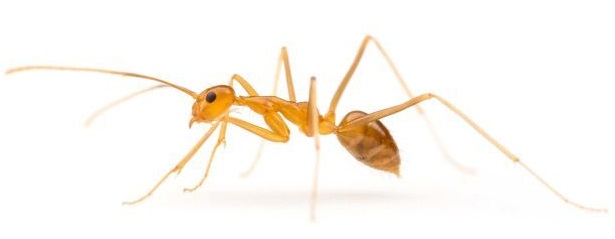
August has arrived, bringing with it the sure sign that summer festivities are coming to their close: Back to School season. Though the heat and humidity of summer are still firmly entrenched for at least another month, the relaxed summer vibe of vacations and time off from responsibilities is rapidly giving way to a hectic shopping frenzy as families rush to prepare for the next school year. Go into any major store in August and you can’t miss their Back to School section, which is virtually guaranteed to be constantly teeming with adults and children erratically making their way through the array of school supplies set out before them. And if your brave enough to venture into one of these stores over tax free weekend you are sure to encounter a crowd so dense it’s almost intimidating. It’s the time of year where you are likely to describe your days as “crazy” as you try to get everything ready for the coming year.
But your days aren’t the only “crazy” things propagating this summer, and the Back to School crowds can’t hold a candle to the erratic movements and dense numbers of the crazy ants that are invading Texas.
Crazy ants aren’t a new species of ant for Texas; they’ve been in the U.S. for over 80 years and the Tawny Crazy Ant was recognized as a unique ant type within the U.S. in 2002, but they haven’t yet reached the household recognizability of the infamous fire ants or carpenter ants, at least not until you have experienced a crazy ant infestation firsthand. Since they are an invasive species, having originated in South America, and have no natural predators in the U.S., their colony sizes can grow to overwhelming size, dwarfing the colonies of other ant species that have become household names. If you think that wrangling children through the maze of Back to School supplies while navigating their disappointment at the impending end of summer break has made your life hectic, imagine adding a house full of ants with a penchant for getting inside electronics to the mix, and see just how crazy the last month of summer could become.

In the spirit of Back to School, here is Crazy Ants 101 with everything you need to know about these prolific pests.
Why are they called crazy ants?
They are called crazy ants because they move in a rapid and erratic fashion and do not follow trails, unlike most ants which are very orderly in their movements.
What do crazy ants look like?
When we refer to crazy ants in Texas, we are usually referring to the Tawny Crazy Ant. There are several different species of crazy ant worldwide, but this is the one that is proliferating in the U.S. at the moment.
They are small, about 1/8” long, are uniform in size, have long, coarse hairs on their body, and are reddish brown (including their legs and long antennae). They are often found in mass groups so large they don’t even look like ants (more closely resembling dirt) until you get close enough to see them moving and spot individual ants.

Are crazy ants dangerous?
Since crazy ants are an invasive species and have only recently been studied in the U.S. their full impact hasn’t yet been determined. They are not directly harmful to humans; though they can bite you, the pain is very minimal and fades quickly. However, due to their extreme numbers and erratic movements, they can be extremely stressful to be around and can make you feel like you are the one going “crazy”. They can also cause significant damage within our homes as well as to livestock and wildlife.
When crazy ants get indoors, they are often drawn to electrical equipment and have been known to render these appliances and electronics inoperable due to their large quantities shorting out the circuits.
Where they are native, they are known to have caused the death of small livestock animals (by asphyxia) and to have attacked larger livestock around the eyes and nose, sometimes blinding them.
Perhaps most telling is that crazy ants are actually displacing fire ants (and most people want the fire ants back). Crazy ants produce an acidic chemical that they rub on themselves as an antidote to fire ant venom and that they can spray at other insects/animals as a weapon to defeat any competitors that might otherwise have kept their populations in check. Though many people would be happy to be free from fire ants, there are ecological consequences, and crazy ants are a frustrating alternative to their much easier to treat counterpart.
How do crazy ant colonies spread?
Unlike a great many ants that create new queens to spread their wings in the spring and take to the air to establish new colonies, crazy ants do not fly, so their spread across the U.S. is happening due to people transporting them unintentionally in materials like abandoned boxes, cars, and potted plants.
Signs of a crazy ant infestation:
Since crazy ants are known for their giant populations, the first, and possibly only, sign you will probably see of an infestation are the ants themselves, often in sizable groups.
Crazy ant prevention and treatment:
Crazy ants are notoriously difficult to get full control over, and are not possible to self-treat for. There aren’t any effective over-the-counter products available to consumers at this time. However, there are several products a licensed pest control professional can use to eliminate the ant population. The sooner you get the infestation treated, the more likely you are to see success with fewer treatments for the ants. When a population has grown to enormous proportions it becomes difficult to kill every last ant with just one treatment, and if there are some ants left alive, they will rapidly begin to rebuild their colony and cause there to be a need for another treatment to eliminate them.
Due to their enormous colonies, you are likely to see large piles of dead ants after your treatment; it’s important to sweep or vacuum up these dead ants so that the crazy ants can’t use the dead ants as a sort of bridge over any products that were put down to eliminate them.
Due to the erratic nature of crazy ants and their habit of not tending to building traditional nests/piles like most other ants, there is not much to be done for prevention. However, it’s always helpful to keep the following tips in mind to control ant populations, and they will assist in the battle against these insanity-inducing ants:
- Remove all harborage areas: fallen tree limbs, rocks, leaf litter, and anything on the ground that isn’t truly needed.
- Reduce humid/wet conditions in and around your home: reduce irrigation, repair any leaks, improve drainage, etc.
- Seal any cracks/crevices around foundation, windows, and doors.
This year, don’t let your August be made any crazier than it has to be; put your new knowledge to use and call us out at the first signs of a possible crazy ant infestation.
Additional References:
“The Rise of the Crazy Ants” – Dina Fine Maron – Scientific American
“Tawny (Rasberry) Crazy Ant, Nylanderia fulva” – Urban and Structural Entomology Program at Texas A&M University
“There’s a Reason They Call Them ‘Crazy Ants'” – Joe Mooallem – The New York Times
Author Bio: Alissa Breach has been gaining knowledge and experience around pest control concerns over the last 10 years while working for Mid-Cities Pest Control. She has a creative writing BA from UW-Madison and is always pursuing new and interesting writing projects.




